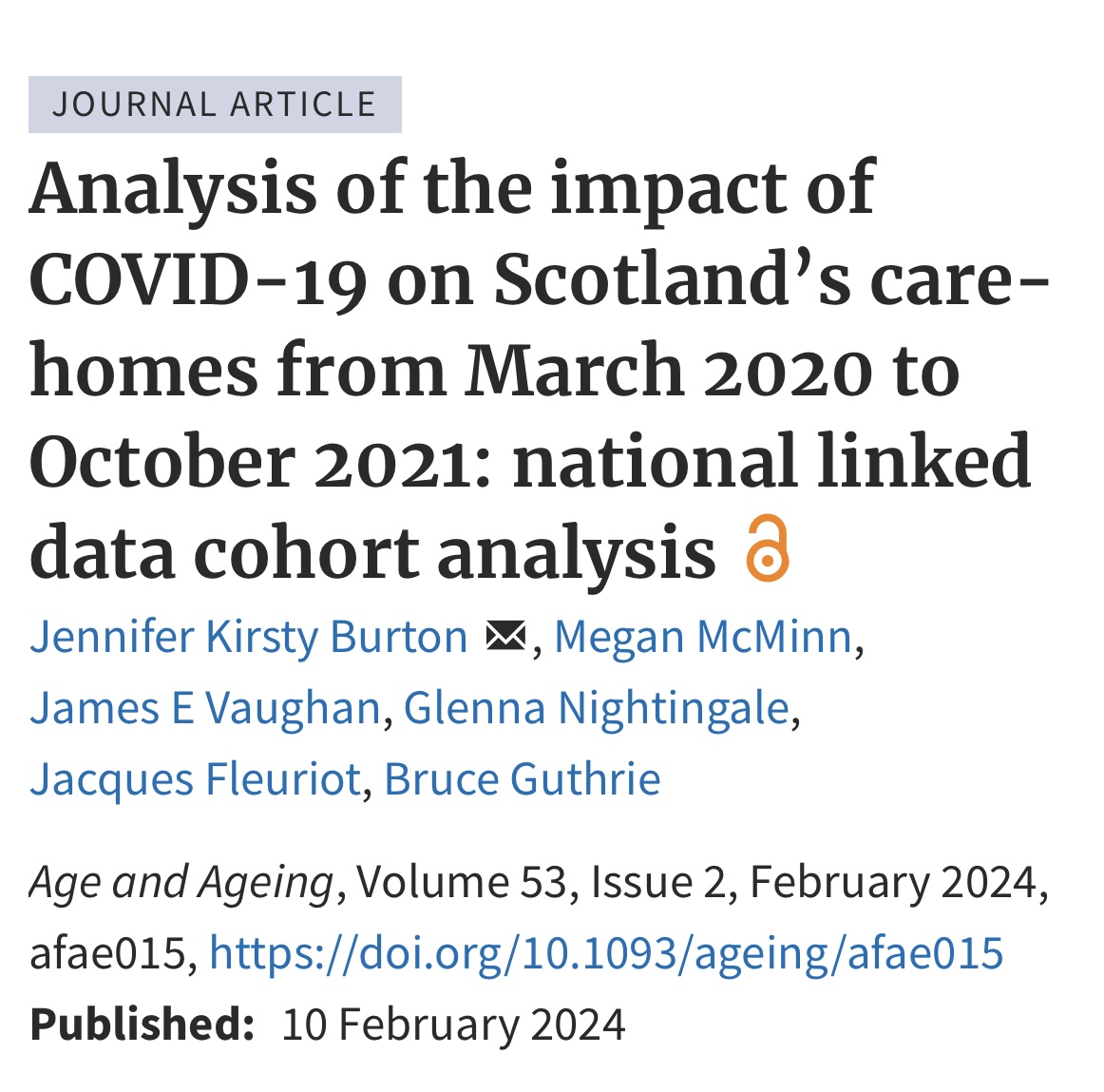New publication: Analysis of the impact of COVID-19 on Scotland’s care-homes from March 2020 to October 2021, national linked data cohort analysis
New publication: Analysis of the impact of COVID-19 on Scotland’s care-homes from March 2020 to October 2021, national linked data cohort analysis
United Kingdom (Scotland)
COVID-19 and other infectious diseases and LTC
Information and data systems in LTC
Residential LTC services
Published:
04 Mar 2024

Our member Jenni Burton, with colleagues from the University of Glasgow, Advanced Care Research Centre and the University of Edinburgh has published new research in Age and Ageing describing the patterns of COVID-19 outbreaks in Scotland’s care homes, beyond the first wave of infections. The paper, available open access from: https://doi.org/10.1093/ageing/afae015, includes analysis on a total of 1,313 outbreaks involving residents from March 2020 to October 2021.
The COVID-19 mortality rate per 1,000 beds fell from 45.8 in March to August 2020 (wave 1) to 29.3 in September 2020 to May 2021 (wave 2). After roll-out of vaccination, outbreaks involve a much smaller number of people and are shorter in duration, with the COVID-19 mortality rate falling to 3.5 per 1,000 beds in June to October 2021.
The analysis shows the consistently elevated risks associated with living in larger care homes, although the risk reduces as the pandemic progresses and epidemiology of the virus evolves. Similarly, the community prevalence of COVID-19 infections in the local authority area where the care home was located was associated with increased risk of outbreak.
Future pandemic planning has to take better account of the care sector and involve residents, families and carers. A critical gap remains that data about people living in care homes is limited, making them relatively invisible to policy. As well as clinical interventions like infection control, we need to better understand how building design and ventilation influences infection risk, and how to balance infection risk against creating a homely environment for residents to live in.
This research required time-consuming data management to link disparate health and social care datasets. Despite recognising the potential value of such data, the researchers point out this continues to be significantly challenging across all UK countries, and the topic of data featured heavily in the Scottish evidence sessions to the UK COVID-19 Inquiry. In particular, the data gaps around understanding the population living in care homes and the impact this had on the initial pandemic response remain of concern. There is a need for a unified approach to improving national data about people living in care homes across the UK, with benefits to be realised in the everyday organisation of health and care services to support them.

